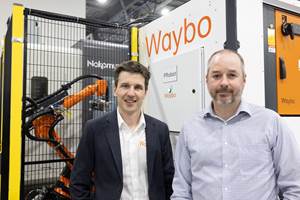Custom Clamping Concept Optimizes Multitasking
To get the most potential out of its multitasking machine, Trumpf uses a detailed custom clamping concept from Schunk.
Share





In an effort to maximize multitasking machine productivity, many companies look to their workholding equipment for answers. Trumpf (Ditzingen, Germany) realized it needed to increase the flexibility of its two new turn-mills to accommodate an expanded part spectrum, so it integrated a custom clamping concept from Schunk. The new workholding concept enabled Trumpf to productively manufacture the modified part spectrum and even return outsourced orders in-house.
The German machine tool and laser manufacturer uses its two new DMG CTX gamma 2000 TC turn-mills for fully automated six-sided complete machining of high-precision components in single batches. The goal was to use the turn-mills to manufacture 100 different products.
Over the course of the project, the success of Trump’s solid state lasers caused the company to change the original part spectrum, which ranged from 200 to 440 mm, to an expanded range of 40 to 440 mm. To accommodate the modified spectrum, the flexibility of the two turn-mills needed to increase without any disadvantages in setup times, precision or efficiency.
Trumpf had many requirements for this process, including milling cubic parts with extremely thin walls, parts with thin-walled rings and parts with extreme surface qualities. Aside from high quality, high productivity was required. The company needed an overall machine concept that involved a design optimized for the clamping technology, tool technology and production costs. Trumpf needed reasonably priced clamping devices and short machining times to achieve a competitive hourly rate.
Trumpf Group Manager of Mechanical Production Roland Goehler, along with his team and Schunk, developed a detailed clamping concept that combined quick-change Rota THW 400 lathe chucks and hydraulic expansion technology. With the assistance of hydraulic-expansion technology and its damping properties, workpiece surface qualities with a roughness of less than 0.0001 mm Rz can be achieved.
Both the main and opposite spindles of the two machines were equipped with Schunk Rota THW 400 lathe chucks with jaw quick-change systems that remain on the machines. The chucks are designed for the high process speed, precision and flexibility of modern multitasking machines. Instead of changing over the complete clamping setup, the required flexibility for the respective parts is achieved using special jaws that can be changed in less than 2 minutes without unscrewing the clamping inserts. The quick-change chucks provide a repeat accuracy of 0.02 to 0.03 mm for turned parts and cubic parts ranging from 40 to 440 mm—capability that enabled Trumpf to reduce setup time by about 90 percent compared with a conventional jaw replacement.
To machine high-precision parts, Trumpf added hydraulic expansion toolholding technology by cutting a cone-shaped quick-change hole into the through-hole of the power chuck on the opposite spindle. This makes it possible to position application-specific hydraulic expansion clamping devices directly on the power chuck in a matter of seconds, thereby reducing machine setup time. The greatest challenge in the project was finding a solution with sufficient universal compatibility to cover 90 percent of applications and simultaneously enable the use of special clamping devices. Using the Rota THW quick-change chuck, Schunk was able to do both with only two clamping setups. The part is finished and removed in an automated process.
The chuck’s low height leaves space remaining in the machine that enables the hydraulic expansion clamping solutions developed specifically for the workpiece to be mounted directly on the Rota THW, and they don’t require connection to the hydraulic system or the clamping cylinder. The machine cylinder only has to push the hydraulic expansion clamping piston to activate the clamping mechanism. The cylinder retracts and releases the hydraulic expansion toolholder automatically. The same adapter can be used for the actuation of the power chuck, the hydraulic expansion toolholder and the mechanical clamping device.
Schunk’s hydraulic expansion mandrels and toolholders are designed to minimize setup times, automatically center workpieces and clamp with a repeat accuracy ranging to 0.003 mm. Instead of using a separate base chuck, only a single base chuck is needed. Unlike mechanical chucks, different clamping diameters can be compensated for without the risk of deforming the workpiece. According to Schunk, the clamping takes place centered and with absolute precision. These high-precision clamping tools are especially useful for the thin-walled precision parts used in Trumpf’s lasers such as flow housing units and turbo-radial fans, which require optimal accessibility. Stable clamping processes of parts with a precision of 0.005 mm for fixed references can be achieved using hydraulic expansion technology. A demanding housing Trumpf previously finished in four clamping processes can now be accomplished in one, using a combination of Schunk precision toolholders and a gripper system.
Trumpf uses the HSK-A 63 interface devices for tool clamping, and the Schunk Sino-R mechanical toolholder for high-volume machining. Sino-R is comparatively short, providing high lateral rigidity and effective vibration damping. For boring, reaming and machining with polycrystalline diamond (PCD) tools, Trumpf uses the Tendo and Tendo E compact hydraulic expansion toolholders. All tools are entered in the central tool management system and their service lives are monitored.
“Unlike the special shrink-fit toolholders we used earlier, which had delivery times of several weeks, the standardized Schunk toolholders are delivered within a few days, ready for use with fixed serial number, coolant pipe and fine balancing,” Mr. Goehler says.
In order to eliminate ancillary times for tool setup, both of Trumpf’s turn-mill machines have a tool magazine with 180 positions, and an additional magazine for oversized tools and feelers. The special shrink-fit mounts previously used in other machines were completely replaced by the Schunk standard toolholders.
To load and unload the turn-mills, Trumpf uses hydraulically actuated Schunk three-jaw UFG 70 insertion grippers, which are designed for part weights ranging to 60 kg and have a maximum gripping force of 12,000 N. Designed as double grippers, they can accommodate both blank and finished parts in parallel, reducing loading and unloading downtime. A pressure piece is designed to ensure safe transfer of the workpiece to the clamping chuck on the main spindle. Here, the quick-change jaw concept is used: The gripper jaws can be adjusted to the range of parts in the shortest time using a quick-change system and a quick-adjustment hole pattern. Just a few jaw variations are said to be sufficient to cover a range of parts. While gripper jaws with grip inserts are commonly used for blank parts, special Schunk Quentes plastic jaws are used to gently handle high-precision finished parts.
Related Content
Shop Doubles Sales with High-Mix, Low-Volume Automation
Robots with adaptive grippers have opened entire shifts of capacity to high-mix, low-volume shop Précinov, doubling its sales.
Read MoreNavigating Large-Scale CNC Machining: Suburban Tool’s Niche Strategy to Stay Competitive
Facing increasing competition from lower-cost imports, Suburban Tool made a move toward large-scale, in-house machining. By identifying a niche in large, precision angle plates and tombstones, the company has strengthened its ability to control quality and protect its reputation.
Read MoreParts and Programs: Setup for Success
Tips for program and work setups that can simplify adjustments and troubleshooting.
Read MoreRail Manufacturer Moves Full Steam Ahead with Safe, Efficient Workholding Solution
All World Machinery Supply paired a hydraulic power unit with remote operating capabilities in a custom workholding system for Ahaus Tool & Engineering.
Read MoreRead Next
Registration Now Open for the Precision Machining Technology Show (PMTS) 2025
The precision machining industry’s premier event returns to Cleveland, OH, April 1-3.
Read MoreSetting Up the Building Blocks for a Digital Factory
Woodward Inc. spent over a year developing an API to connect machines to its digital factory. Caron Engineering’s MiConnect has cut most of this process while also granting the shop greater access to machine information.
Read More5 Rules of Thumb for Buying CNC Machine Tools
Use these tips to carefully plan your machine tool purchases and to avoid regretting your decision later.
Read More

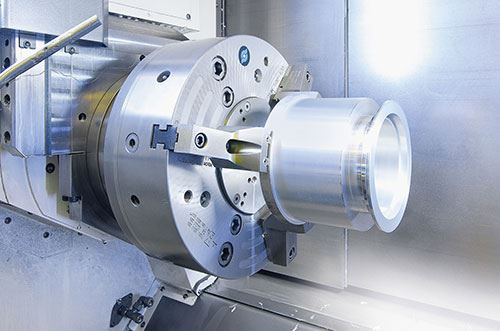
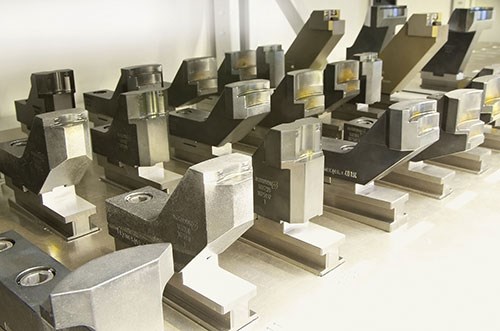
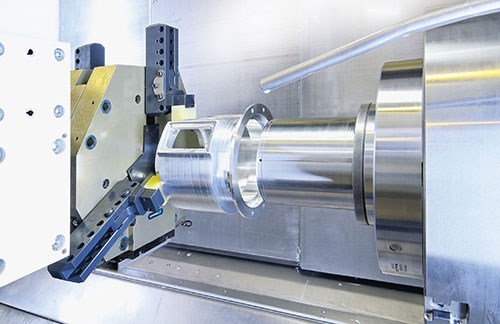
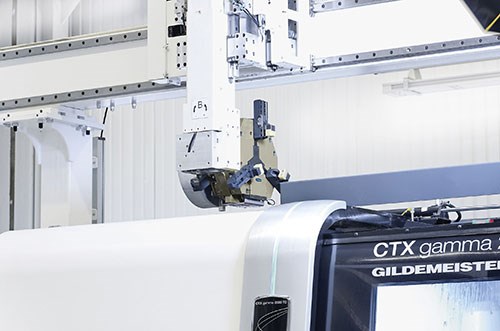
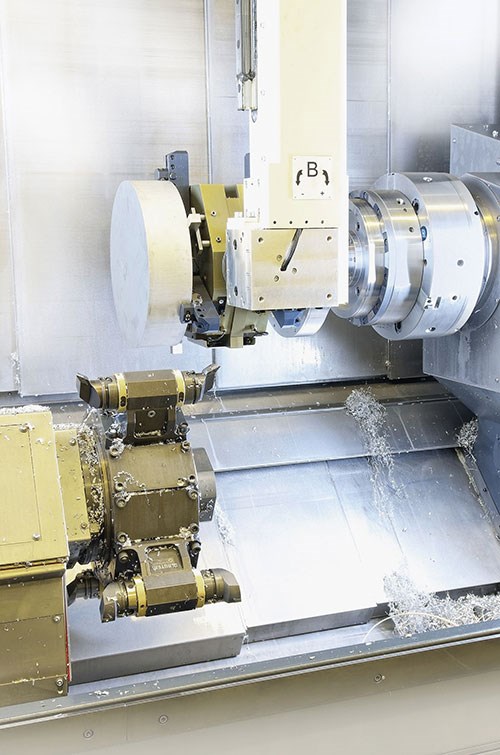




























.jpg;maxWidth=300;quality=90)
